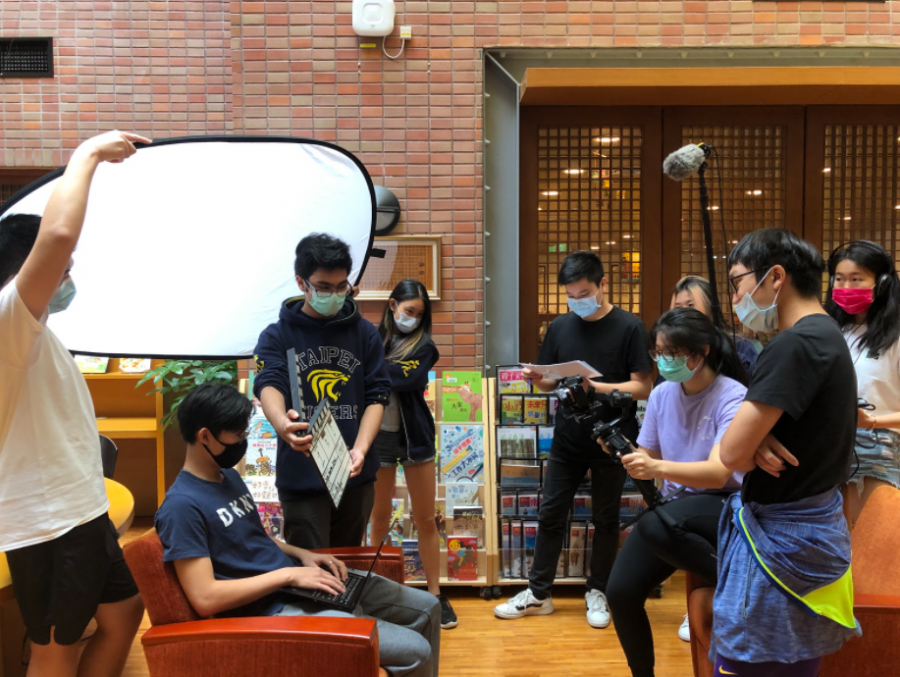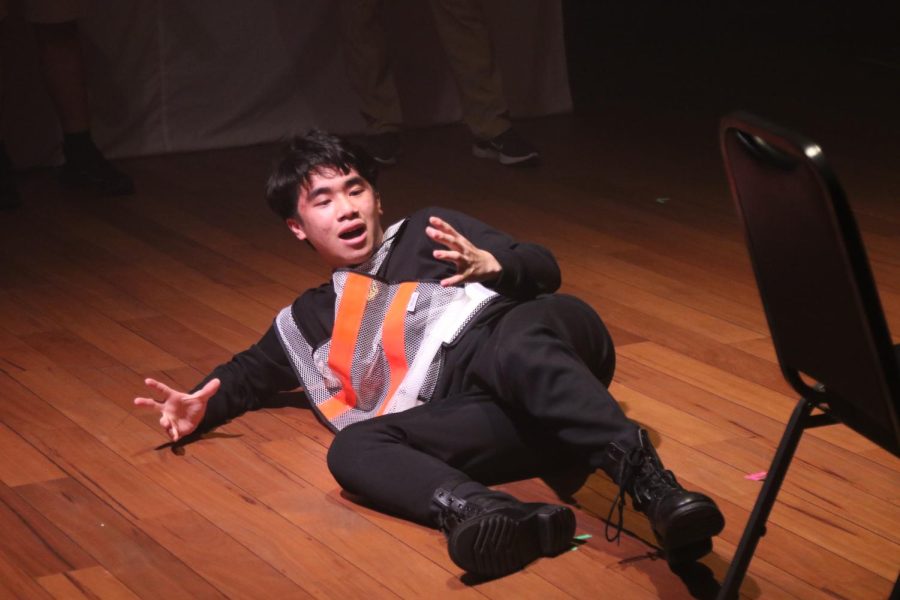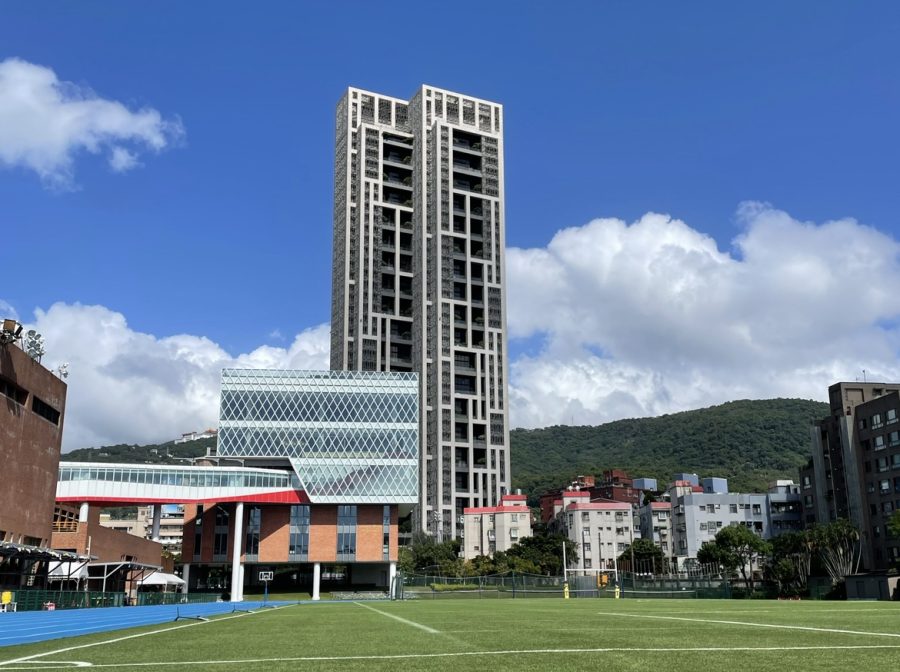On Nov. 21-22, upper school delegates participated in the Interscholastic Association of Southeast Asian Schools (IASAS) Film Competition, where the format was changed to include a 48-hour film challenge due to the COVID-19 coronavirus.
Originally, the competition was meant to be hosted by TAS and would have consisted of international delegates creating a film together and attending workshops. However, the pandemic has inhibited many of the meaningful activities that were previously scheduled.
“I think traveling is the key component to this event, and it was extremely difficult to kind of try to recreate the goals of that experience without traveling,” Upper School Assistant Film Director Mr. Adrian Town said. “It is one of those things that where it is not really possible to do virtually, because it was really the collaboration of students meeting students from other schools who had this one common interest, which was film.”
Especially for senior student delegates, these changes to IASAS film were a continuing disappointment after the cancellation of last year’s New York Film Festival trip.
“We have to stay here and host IASAS online,” IASAS delegate Samuel Chang (‘21) said. “So I am definitely disappointed that I can’t travel my last year in high school.”
For the 48-hour film challenge, students were given a prompt on Friday and had to conceptualize, film and edit a complete production by Sunday night. The prompt required the integration of the line: “It didn’t have to be like this” and a clock or watch. The premise was for students to utilize their skills in visual storytelling as no other dialogue was allowed.
“It’s not necessarily an official format for IASAS film, but I think all of the film advisors from all these schools have been just drawn to the idea that the 48-hour challenge is a classic kind of template for film competitions,” Mr. Town said.
Students were divided into two groups to create the films. The first production, called “Burnin’ Love” is about a boy’s passionate daydream about his next meal. The other, “Scholar’s Mate,” is a Groundhog Day inspired film about reliving an intense chess match.
Although this proved to be more demanding due to the intense concentration that was required, the overall experience was still rewarding. “I think it was good because we could all collaborate really well with each other, and we put a lot of effort into it,” Sabrina Hsu (‘21), another IASAS film delegate said.
Another unique component of the IASAS exchange this year was a Zoom call workshop with Dr. Richard Raskins, a professor at Aarhus University in Denmark who is also a renowned short-film theorist.
“We have always followed Richard Raskins’ kind of approach to short-film making, and it is a really concise and thorough way of making short films,” Mr. Town said. “What was most beneficial [about this workshop] was that it relates to what we teach and can be this amazing lesson on short filmmaking.”
Additionally, film students created their own individual films under the prompt “The 10 Percent,” which were all included as submissions as part of the IASAS exchange. Each school was given a collective total of 12 minutes to present all their films, each at a maximum of three minutes.
Historically, IASAS Film was always integrated as part of the “Art & Film” section of academics at TAS. But with the new introduction of film technology and development of filmmaking language, IASAS Film is being renewed as its own individual entity. What makes the exchange different from other IASAS programs at its core is the emphasis on collaboration rather than competition.
“Filmmaking is already kind of a niche community, where everyone knows everyone else,” Mr. Town said. “So being able to go to another school and see another community with the same kind of closeness creates a really interesting bond. It really is a celebration of film as a whole.”


![The Girls Tennis team traveled to Singapore to compete in IASAS, placing third. [PHOTO COURTESY OF SAS]](https://blueandgoldonline.org/wp-content/uploads/2023/05/gtennis-900x600.jpeg)


![Richie H. (‘23) submitted a tryptic titled
“Taipei: Through the Looking Glass” about
moving to Taiwan, hoping to provide a
unique perspective through rose-tinted
glasses. [PHOTO COURTESY OF ISM]](https://blueandgoldonline.org/wp-content/uploads/2023/01/DSC_6730-900x601.jpeg)
![Over 300 students debated together on the last day of the IASAS MUN Conference. [ARIEL L./THE BLUE & GOLD]](https://blueandgoldonline.org/wp-content/uploads/2022/12/iasas-mun-675x900.jpg)

![TAS upperclassmen volunteers helped
guide guests at the fair. Volunteers were
also involved in the set-up and clean-up
processes. [VICTORIA HSU/THE BLUE & GOLD]](https://blueandgoldonline.org/wp-content/uploads/2023/12/DSC05845-1200x798.jpeg)
![The film team poses for a group photo in Central Park. [ERIN WU/THE BLUE AND GOLD]](https://blueandgoldonline.org/wp-content/uploads/2023/12/film_5782-1200x900.jpeg)

![The last prom was held in 2020. [PHOTO COURTESY OF ELAINE H. (‘21)]](https://blueandgoldonline.org/wp-content/uploads/2023/05/prom.jpg)
![Students watched their classmates graduate in 2022. [PHOTO COURTESY OF TAS COMMUNICATIONS]](https://blueandgoldonline.org/wp-content/uploads/2023/05/grad-900x599.png)
